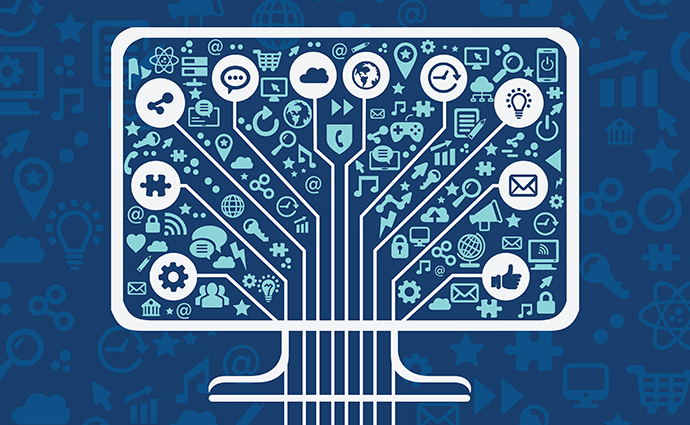A California FQHC Plots its Path to Telehealth and RPM Sustainability
The Northeast Valley Health Corporation is building off a virtual care strategy launched during the pandemic to develop telehealth and remote patient monitoring programs that address barriers to care for its underserved patients.

Source: ThinkStock
- While the pandemic saw an across-the-board surge in telehealth adoption, federally qualified health centers often experienced the biggest benefits. Long restrained by restrictive Medicare rules, FQHCs took advantage of COVID-19 emergency waivers to jump on the connected health bandwagon with both feet, expanding access to care for some of the nation’s most underserved populations.
As a result, FQHCs and rural health centers (RHCs) are now in the spotlight, with proposals from the Centers for Medicare & Medicaid Services to expand telehealth and remote patient monitoring coverage in the 2022 Physician Fee Schedule and several bills before Congress aiming to codify that coverage.
One FQHC looking to build on that momentum is the Northeast Valley Health Corporation (NEVHC), a California-based provider and one of the nation’s largest community health centers. Working off of a virtual care strategy launched during the height of the pandemic, NEVHC has launched a remote patient monitoring platform aimed at addressing some of the biggest barriers to care faced by its patients.
mHealthIntelligence recently sat down – virtually – with Debra Rosen, NEVHC’s director of quality and health education, to talk about the health center’s journey to connected care.
Q: How long has NEVHC used telehealth, and for what services?
READ MORE: California Bill Seeks Medicaid Coverage for Telehealth in FQHCs, RHCs
Debra: Prior to COVID-19 NEVHC, like the majority of several other health centers, did not offer video visits; rather, we occasionally offered telephone appointments between a patient and a medical provider or care coordinator. We began offering video visits in April of 2020 and significantly expanded use of telephone visits for medical care.
Q: How has the pandemic affected your telehealth strategy (good and bad)?
Debra: Fortunately, we were able to quickly pivot and begin offering telephone and telehealth visits during the pandemic to continue seeing patients. Our team continues to put an emphasis on training our staff and patient care teams on how to best leverage these solutions in order to continue providing a seamless experience for patients, thus increasing the likelihood that we continue offering telehealth visits.
Q: What was behind the decision to launch an RPM program? What gaps in care are you looking to address?
Debra: Our center previously leveraged RPM to support patients with asthma outside of the medical visits, and we also provided unconnected home BP monitors and glucose monitors. We recently implemented Rimidi’s FHIR-enabled RPM platform due to the large number of telehealth and telephone visits (and lack of in-clinic measurements being taken). With this platform, we have been able to better support clinical decision making, mitigate gaps in care and efficiently achieve quality measures.
READ MORE: SF-Based FQHC Adds Telehealth, Remote Patient Monitoring to PACE Services
Q: How are you using telehealth and RPM to address health inequities?
Debra: Long before COVID-19, minority and underserved communities have endured limited access to care and a greater likelihood of experiencing chronic conditions such as diabetes, heart disease and obesity. COVID-19 increased this gap even more. At NEVHC, 99 percent of our patients are within 200 percent of the Federal Poverty Level, meaning we serve some of the most vulnerable populations in the US. Recognizing the digital divide, we are proud to have the opportunity to implement and adopt new tools like RPM and telehealth that enable us to provide essential healthcare services to our patients, regardless of their insurance status.
Q: What are the challenges you face in using these platforms?
Debra: While we are still overcoming hurdles mostly related to ensuring we are using new solutions such as RPM and telehealth to the best of our ability, the benefits of such tools far outweigh the challenges. Telehealth has enabled us to continue providing care even during periods of quarantine, and RPM allowed us to monitor our patients remotely, therefore decreasing the chances of patient and provider exposure to COVID-19.
Q: How have these platforms helped your care providers?
READ MORE: FQHC Consortium Using FCC Award, Telehealth to Tackle the Digital Divide
Debra: Data continues to show that both patients and providers have an appetite for RPM and telehealth, and while some of our patients are returning to in-person care, a large number continues to prefer being served remotely.
Q: How are you measuring success with telehealth/RPM?
Debra: Currently we are reporting through our population management system to assess baseline blood pressure control and BP values monthly. We are also looking at patient engagement levels in our RPM program, such as what percentage of patients are taking their BP as recommended.
Q: How are you sustaining the program (funding)? Is that a challenge?
Debra: Funding continues to be a challenge, and we are continuing to explore options beyond grant funding so that we can further succeed in our mission of providing quality, safe and comprehensive primary healthcare to medically underserved residents of Los Angeles County.
Q: How will these platforms evolve? What more would you like to do with telehealth and RPM?
Debra: Should funding be available, we would like to expand RPM use to glucose monitoring and weight management as well. Overall, as healthcare continues to shift from a fee-for-service to a value-based care approach, RPM will become even more effective in ensuring all populations require adequate care.
